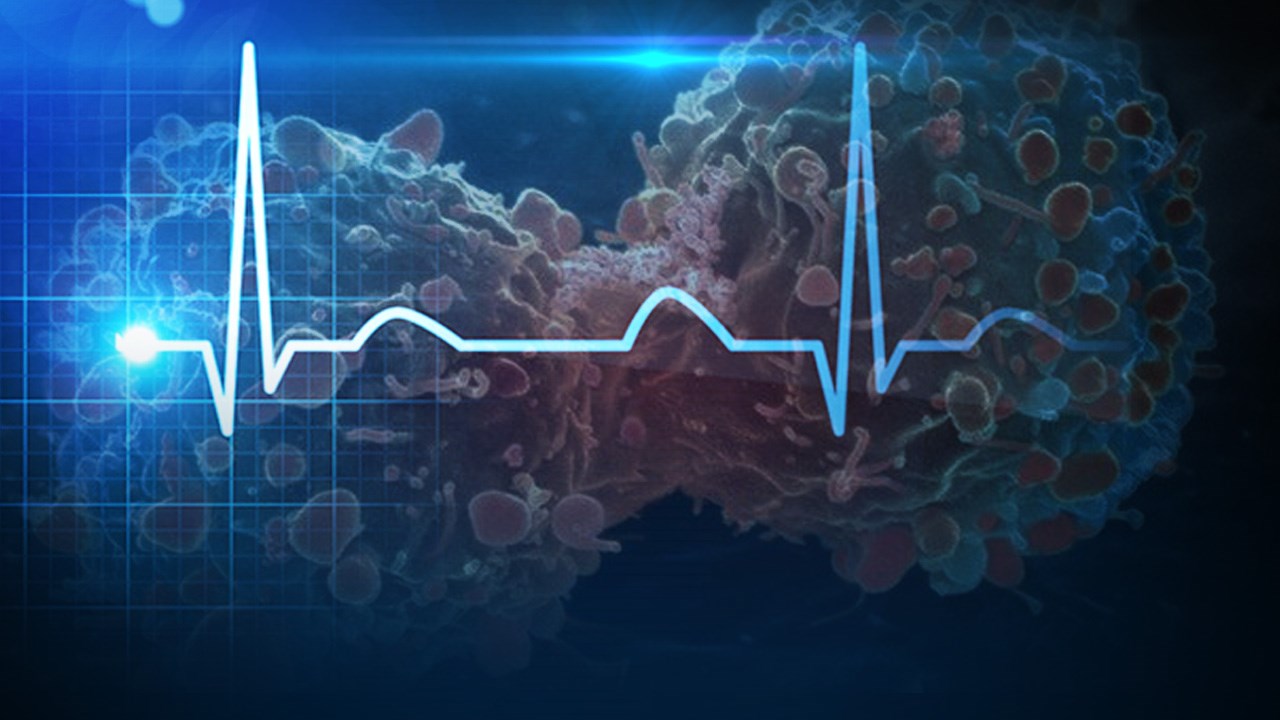Jason Mendelsohn had been married for close to 20 years and was happily raising three kids when he noticed the painless lump on his neck while shaving three years ago.
Within days, he had been diagnosed with a deadly form of cancer caused by a virus that he probably caught while in college, decades before.
Mendelsohn, now 48, is the classic victim of head and neck cancer caused by HPV, the human papillomavirus. A new study out this week shows there’s a silent epidemic of HPV-related cancers among men.
A team at the University of Florida, Baylor College of Medicine and elsewhere found that 11.5 percent of U.S. men were actively infected with oral HPV between 2011 and 2014, and 3 percent of women were. That adds up to 11 million men and 3 million women, the researchers report in the Annals of Internal Medicine.
It’s a sexually transmitted infection and the more sex partners someone had, the bigger their risk. But the study found smoking also increased the danger of a high-risk infection, and, perhaps surprising to some, that men and women alike who smoked marijuana were far more likely to develop a cancer-causing strain of HPV.
“The predicted probability of high-risk oral HPV infection was greatest among black participants, those who smoked more than 20 cigarettes daily, current marijuana users, and those who reported 16 or more lifetime vaginal or oral sex partners,” the researchers wrote.
Most people get over these infections and never even know they had them. HPV doesn’t cause any symptoms at first. But in some people, it stays in the infected tissues and causes DNA damage that, years later, causes a tumor to grow.
Rising rates of oral cancer
HPV is the single biggest cause of cervical cancer and certain types of head and neck cancers called oropharyngeal cancers, according to the Centers for Disease Control and Prevention. Between 2008 and 2012, close to 39,000 people were diagnosed with a cancer caused by HPV every year in the U.S., 59 percent of them women and 41 percent men, the University of Florida team reported.
But while the Pap smear and, more lately, HPV tests have reduced rates of cervical cancer, rates of oral cancer are growing.
There are now more of these HPV-related throat cancers in men than there are cervical cancers in women,” said Dr. Erich Sturgis, professor of head and neck surgery at the MD Anderson Cancer Center at the University of Texas.
Frighteningly, the cancers don’t cause any symptoms until they have spread. There is no way to screen people for them — unlike a Pap smear for cervical cancer, there’s not a good test for oral HPV. The only way to prevent infection is the HPV vaccine but once someone’s already infected — and that’s most people over age 26 — the vaccine doesn’t help.
That leaves several generations of Americans vulnerable to these head and neck cancers with no way of knowing if one is silently growing.
Mendelsohn was one of them.
“I had zero symptoms, except I found a bump on my neck,” Mendelsohn said.
“And the ironic thing is that I literally shave probably every day and never saw or felt the bump before.”
It was stage 4 oropharyngeal cancer.
Treatment for head and neck cancer can be grueling and Mendelsohn said his was no exception.
“It was brutal. I had a radical tonsillectomy,” Mendelsohn, who is recovered now, said.
“I had 42 lymph nodes removed from my neck, followed by seven weeks of chemo, radiation and a feeding tube.”
The radiation treatment was the worst.
“You have your head strapped down to a table and you can’t move and you can’t swallow your own saliva, so it’s like being waterboarded,” Mendelsohn said.
“It’s horrible,” agreed Sturgis.
“That’s ever more reason why we want to get kids vaccinated so they don’t develop these.”
Now an advocate for men with head and neck cancer, Mendelsohn notes that he was not promiscuous and did not engage in what most people would see as risky sexual behavior.
“I’d been married 21 years. I’ve got three kids. They believe I got the virus in college when I was 18 or 19 and it showed up decades later,” he said.
“This is not people who were promiscuous or who cheated on their spouses. This is normal — like you grow up, you date in college — just normal, everyday dating and having girlfriends,” he added.
“Most people will tell you it’s just oral sex with a woman who has HPV.”
It’s likely spread by all types of oral sex, said Sturgis, who was not involved in the research.
While 11 percent of men had oral HPV in the study published this week, Sturgis notes that's only over a three year period. Over decades, that adds up to millions more.
“You can imagine over time quite a bit of the population will be exposed to oral HPV. Eighty percent of the population will have a genital HPV infection at some point in their life,” he said.
And a significant number go on to develop cancer.
“Each year, about 11,600 people in the United States are diagnosed with cancers of the oropharynx that may be caused by HPV,” the CDC says.
Dentists on the front lines
It’s not clear why the numbers are going up so much, but Sturgis says fear of HIV and of pregnancy may have made oral sex more common and more acceptable starting in the 1980s.
Related: Two-thirds of Americans Infected with HPV
“If someone has an oral infection, in theory they can spread it by deep kissing,” he said. Unlike HIV, which is spread by blood and semen, HPV is spread in the fluids of the mucosal membranes — which line the mouth, throat and genital tracts.
“The highest viral loads tend to be in the cervix,” Sturgis said. “Men performing oral sex on women probably tend to get exposed to the highest amount of virus.”
D Anderson and other groups are working to encourage HPV vaccination, but they are also trying to fill the gap for people too old to be vaccinated who are at high risk.
“We are working with the American Dental Association. We are working with them both on trying to increase vaccination rates and on reducing smoking rates,” Sturgis said.
“There are so few specialists in the head and neck region. But there are almost 200,000 dentists across the country. And dentists see adolescents. If we could get dentists to at least ask parents whether their kids are vaccinated, just by asking we are going to help improve knowledge about the problem and at least get more of our kids vaccinated.”
The risk hit the headlines 2013 when actor Michael Douglas announced that he was being treated for throat cancer and said he believed it was caused by HPV.
Two FDA-approved vaccines — Cervarix and Gardasil — prevent infection with HPV strains 16 and 18, which are most likely to cause cancer. A new form of Gardasil, approved earlier this year, adds five new high-risk HPV strains to its coverage, for even more cancer protection.
Both boys and girls are supposed to get two doses of the vaccine, starting at age 11 or 12.
But the CDC says only 60 percent of parents are getting their kids vaccinated.


